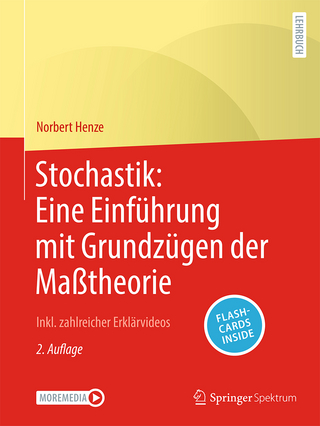
Capture-Recapture: Parameter Estimation for Open Animal Populations
Springer International Publishing (Verlag)
9783030181864 (ISBN)
This comprehensive book, rich with applications, offers a quantitative framework for the analysis of the various capture-recapture models for open animal populations, while also addressing associated computational methods.
The state of our wildlife populations provides a litmus test for the state of our environment, especially in light of global warming and the increasing pollution of our land, seas, and air. In addition to monitoring our food resources such as fisheries, we need to protect endangered species from the effects of human activities (e.g. rhinos, whales, or encroachments on the habitat of orangutans). Pests must be be controlled, whether insects or viruses, and we need to cope with growing feral populations such as opossums, rabbits, and pigs.
Accordingly, we need to obtain information about a given population's dynamics, concerning e.g. mortality, birth, growth, breeding, sex, and migration, and determine whether the respective population is increasing , static, or declining. There are many methods for obtaining population information, but the most useful (and most work-intensive) is generically known as "capture-recapture," where we mark or tag a representative sample of individuals from the population and follow that sample over time using recaptures, resightings, or dead recoveries. Marks can be natural, such as stripes, fin profiles, and even DNA; or artificial, such as spots on insects. Attached tags can, for example, be simple bands or streamers, or more sophisticated variants such as radio and sonic transmitters.
To estimate population parameters, sophisticated and complex mathematical models have been devised on the basis of recapture information and computer packages. This book addresses the analysis of such models. It is primarily intended for ecologists and wildlife managers who wish to apply the methods to the types of problems discussed above, though it will also benefit researchers and graduate students in ecology. Familiarity with basic statistical concepts is essential.
George Seber is a retired Professor of Statistics at Auckland University, New Zealand, a Fellow of the Royal Society of New Zealand, and recipient of the Society's Hector Medal in Information Sciences. He is the author or coauthor of seventeen books on various branches of statistics. More recently, as a trained counselor/psychotherapist, he has written an extensive book on counseling for practitioners and a booklet on the dying and death of loved ones, as well as a book on religion and science. He has published research articles on a variety of statistical subjects.
Preface.- 1 A Brief History of Capture-Recapture.- 2 Tagging methods and Tag Loss.- 3 Tag Returns from Dead Animals.- 4 Using Releases and Resightings.- 5 Mark-Recapture: Basic Models.- 6 Multiple Recaptures: Further Methods.- 7 Departures from Model Assumptions.- 8 Combined Data Models.- 9 Further Bayesian and Monte Carlo Recapture Methods.- 10 Log-Linear Models for Multiple Recaptures.- 11 Combining Open and Closed Models.- 12 Continuous Dead-Recovery Models.- 13 Multisite and StateSpace Models.- 14 Designing and Modeling Capture-Recapture Experiments.- 15 Statistical Computation.- 16 Where to Now?.- APPENDIX A Some General Results.- References.- Index.
| Erscheinungsdatum | 30.08.2019 |
|---|---|
| Reihe/Serie | Statistics for Biology and Health |
| Zusatzinfo | XIX, 663 p. 15 illus. |
| Verlagsort | Cham |
| Sprache | englisch |
| Maße | 155 x 235 mm |
| Gewicht | 1184 g |
| Themenwelt | Mathematik / Informatik ► Mathematik ► Wahrscheinlichkeit / Kombinatorik |
| Schlagworte | Acoustic tags • Animal Migration • bayesian models • Capture-mark-recapture • Cormack-Jolly -Seber models • Cormack-Jolly –Seber models • genetic markers • GPS • Monte Carlo Recapture Methods • Ring recovery data • State-space Models • Survival estimation • Time-series Models |
| ISBN-13 | 9783030181864 / 9783030181864 |
| Zustand | Neuware |
| Informationen gemäß Produktsicherheitsverordnung (GPSR) | |
| Haben Sie eine Frage zum Produkt? |
aus dem Bereich


